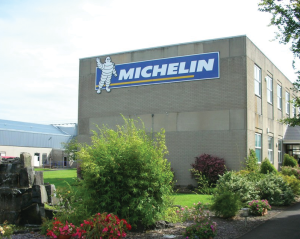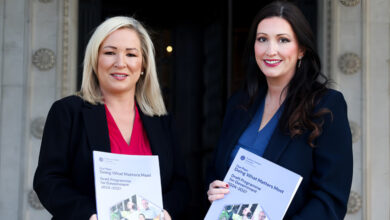Economy stalls
Data shows that economic growth for Northern Ireland shrank during the second quarter of this year and comes at a time of several high profile factory closures.
The latest Northern Ireland Composite Economic Index (NICEI) published by the Northern Ireland Statistics and Research Agency (NISRA) shows that the total economic output for Northern Ireland shrank by 0.1 per cent between Q1 2015 and Q2 2015. Although this indicator can show some volatility from quarter to quarter, the local economy appears to be slowing. This comes at a time of several announcements of job losses including the loss of 860 jobs at Michelin’s Ballymena factory by 2018.
Northern Ireland’s economic recovery has been lagging well behind that of the UK’s and the Republic of Ireland’s. The average GDP growth for the year to Q2 2015 for the UK was 2.7 per cent compared to the previous year. The Northern Ireland growth rate was 1.3 per cent over the same period. Despite much talk over recent years of rebalancing the local economy, the productivity challenge remains and is a lagging region of a laggard country when looking at global competitiveness. The manufacturing sector locally had held up well until recent months when there has been several announcements of factory closures. The introduction of a corporation tax rate should boost the sector going forward.
There has been some recovery but it has been weak. The NICEI is currently 3.5 per cent above the low point in Q4 2012 and has returned to levels previously recorded in Q3 2010. It has not recovered to its peak and is still 8.2 per cent below the pre-economic downturn peak recorded in Q2 2007. Although the province has a relatively low unemployment rate, this masks a high level of economic inactivity. The proportion of economically inactive persons is at 27.6 per cent, compared to the UK rate of 22.1 per cent.
Two recoveries
The EY Economic Eye winter forecast 2015 reflects the slowdown in the local economy and contrasts the sluggish economic growth in the North with the accelerating growth in the South. For 2015, the expected growth in Northern Ireland is 1.3 per cent compared with 6.7 per cent for the Republic. The surge in economic activity south of the border appears to be driven by both exports, which have performed well throughout the economic crisis, and domestic consumption, which is showing signs of life after a long period of austerity. There has also been a recovery in the construction sector in the Republic which was hit particularly hard during the economic downturn. The share of employment for the construction sector is now recovering to long-term OECD average levels of around 7 per cent, still well below the Celtic Tiger level of nearly 13 per cent.
The EY report also highlighted the issue of economic activity being concentrated in cities. In Northern Ireland it shows Belfast having 15 per cent of the population but 31 per cent of GVA.
Future
The implementation of corporation tax will come at an initial cost but has been hailed as a “game changer” by Economy Minister Jonathan Bell. There will be clear benefits in harmonising the North’s corporation tax rate with that in the South. Technically, austerity only hit Northern Ireland this year. With the onset of budget cuts there will be a dampening effect on the Northern Ireland economy. EY forecast economic growth to be 1.6 per cent in 2016, slightly lower than the expected 1.7 per cent for 2015.






